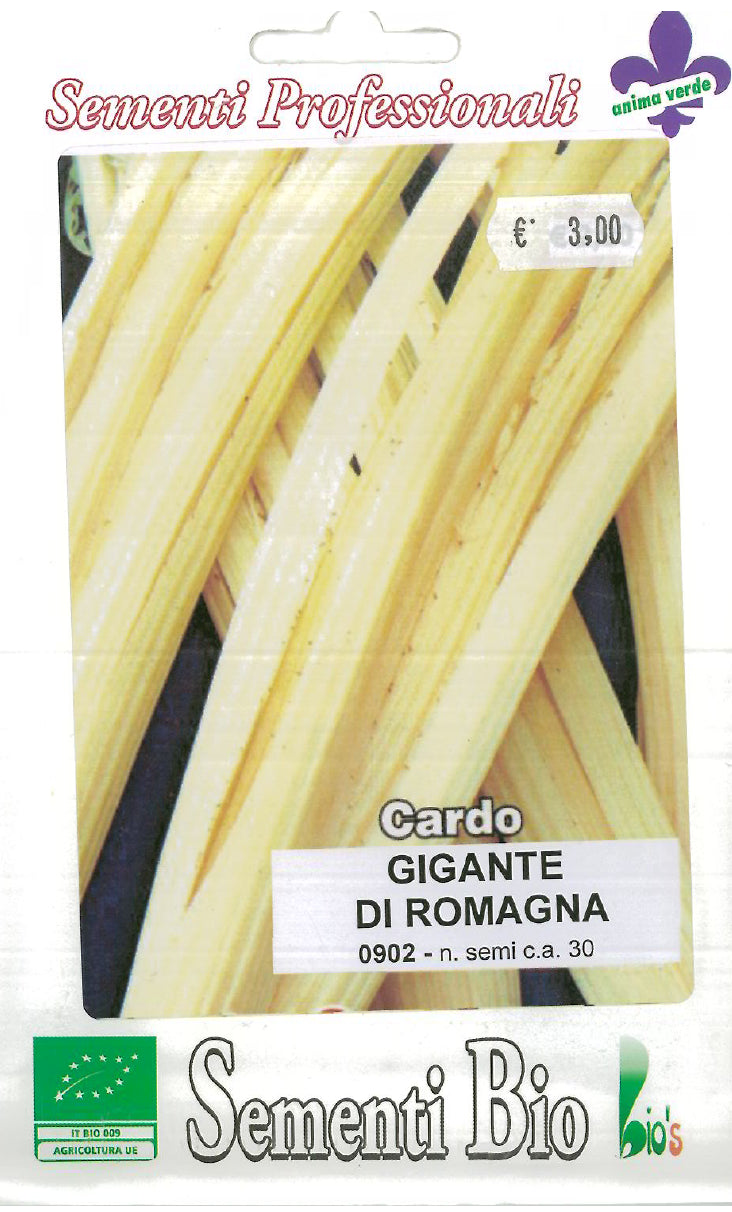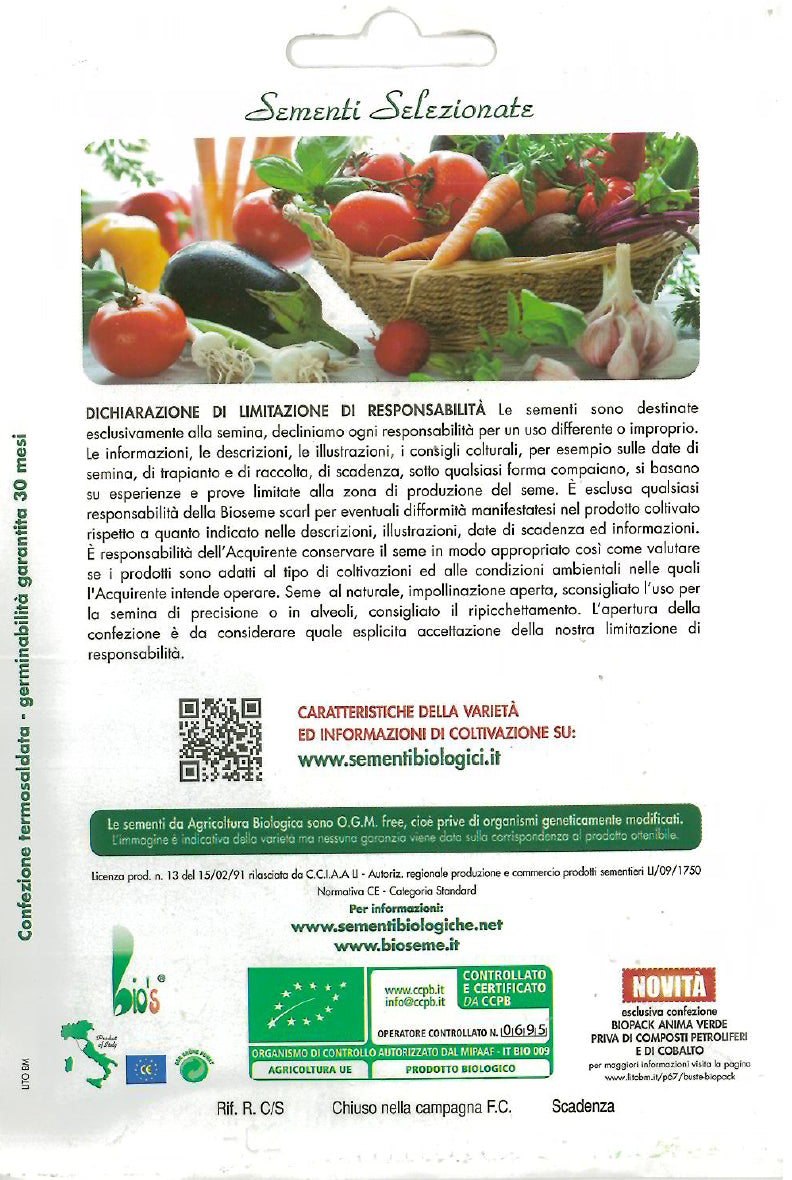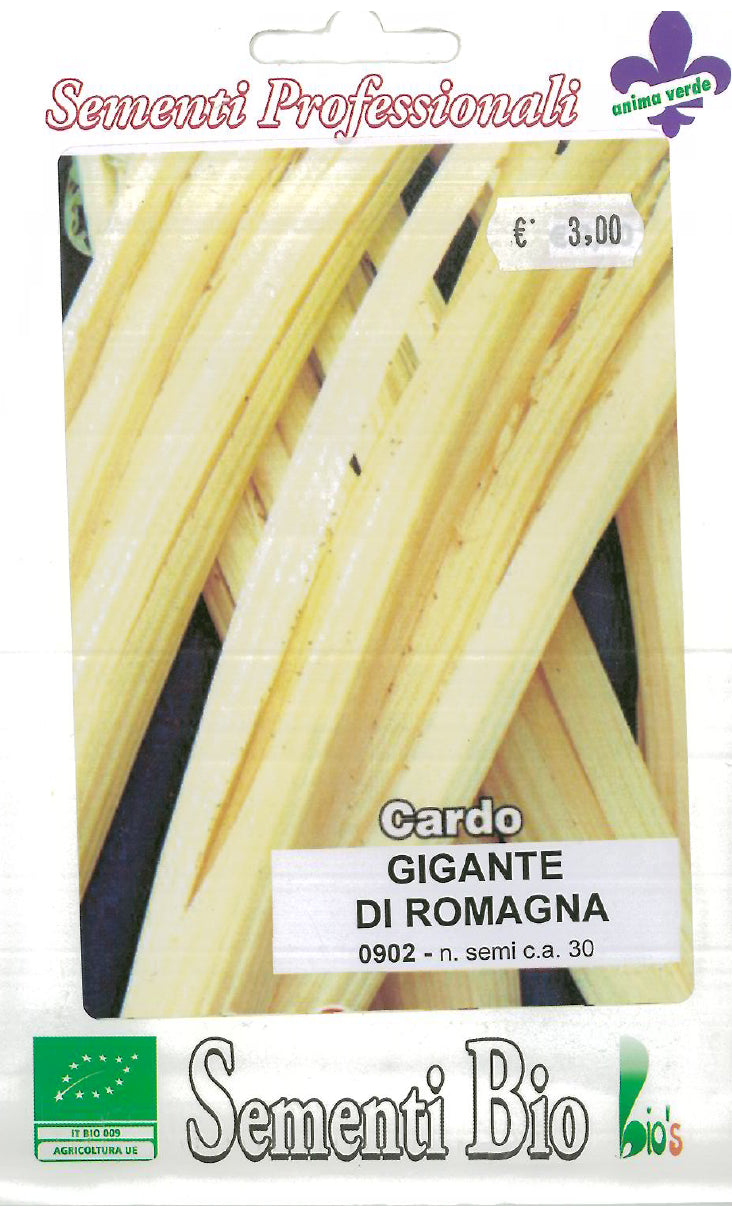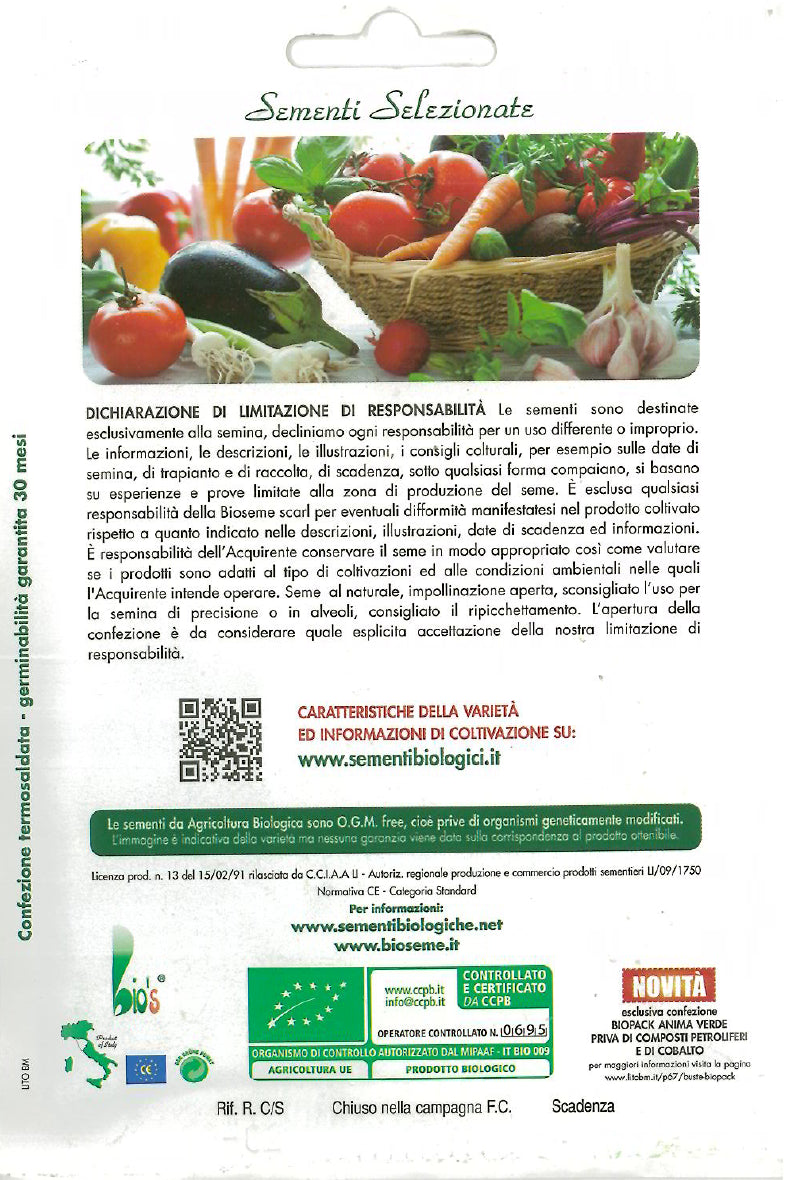Scientific Name: Cynara cardunculus L. altilis DC
Family: Asteraceae
BRIEF HISTORY AND BOTANICAL NOTES ON THE PLANT
The generic term "Thistle" refers to different genera and species of plants all from the Asteraceae family. Within the cardunculus species, three different taxa are distinguished:
• C. cardunculus var. sylvestris Lam. (wild thistle) widespread spontaneously in the western Mediterranean basin.
• C. cardunculus var. altilis DC. (cultivated thistle).
• C. cardunculus subsp. scolymus (L.) Hegi (artichoke).
Here we are dealing with cultivated thistle, a plant native to the Mediterranean, already cultivated in Roman times, although the first certain references were found in the Egyptian civilization and perhaps also in Ethiopia. It is mentioned by Pliny, in his "Natural History", as a prized vegetable. It appears in numerous ancient legends that associate this flower with the Sicilian shepherd Daphne, upon whose death (thanks to the intervention of Pan and Diana), the Earth, full of pain, gave birth to a plant full of thorns, the "thistle". In Aryan traditions the thistle was associated with the god Thor. The thistle is the symbol of Scotland: legend has it that a group of Vikings were about to surprise the sleeping Scots, but the ambush failed because an invader, stepping on a thistle with his bare foot, started shouting. In fact, in Scottish banners the thistle is associated with a Latin motto which translated means "No one will have challenged me with impunity".
The thistle is a perennial herbaceous plant in nature, annual in cultivation, with deep taproots. Survival, in addition to the achenes, is entrusted to specific buds present on the basal fraction of the stem and on the rhizomes (geophytic species). Compared to the artichoke, it has a greater development in height and leaves with thick and fleshy petiole and ribs which constitute the edible part. The leaves are pinnate, ash green on the top, whitish on the bottom, very tomentose. The inflorescence is a flower head with hermaphroditic flowers that have a violet-blue color of various shades, but white mutants can also be found. The fruit is a dark greyish and mottled achene, combined with the calyx transformed into pappus, to facilitate dissemination.

CLIMATE NEEDS
It prefers fertile, fresh and deep soils, of medium texture and without water stagnation, generally neutral, but has good adaptability. In terms of thermal requirements, it is sensitive to low temperatures: it stops growth at 0°C and can die below -2°C. The exposure must be sunny.
SOWING AND TRANSPLANTING TIMES
For planting, the soil must be well worked and fertilized with an abundant and mature dose of compost.
The plant can be created in spring with direct sowing in the April-May period (3/4 seeds per hole in rows 1 meter apart from each other and 80 cm between one plant and another, or in holes 80/80 cm apart 100 centimetres) or with transplanting of seedlings obtained in the seedbed in the May-June period).
Transplant on descending moon in leaf days following spraying of cornolet manure.
PROCESSINGS
Weeding (for the control of wild herbs).
PRODUCTS
It is mainly intended for fresh consumption.
Recently the thistle has also found use in the energy supply chain. In fact, the seeds can be used for the production of biodiesel, while the residual biomass for the production of thermal energy.
FERTILIZATION
Further additions to the plant fertilization are generally not necessary.
CULTURAL CURES
The thistle is subjected to bleaching: cover the plant, from the basal part up to about two thirds of the height, to protect it from light. Different techniques can be followed: the leaves of the plant are tied together around the central axis and then earthed up, placing a conical mound of earth against the plant; or you can lay the plant down in a pit dug next to it, then covering it with earth, leaving the apical part uncovered (humped thistle); alternatively, the plant is wrapped with straw or cardboard or opaque plastic sheets (laid by machine in industrial crops). The duration of the bleaching technique varies according to the temperature (approximately 2 to 3 weeks).
IRRIGATION
Depending on the climatic trend and the area, it requires emergency irrigation or frequent irrigation to avoid drought-induced vegetative stasis.
ADVERSITY'
The main adversities of the thistle are:
powdery mildew or white disease (Leveillula taurica f. sp. cynarae Jaczewski): the affected leaves show the characteristic powdery-white efflorescence
downy mildew (Bremia lactucae Regel.): this is the same agent as the similar disease on lettuce, pathogenic on thistle (and artichoke) with specialized breeds
bacterial rot (Erwinia carotovora var. carotovora Dye): manifests itself with rot that spreads in the collar area or from the roots starting from lesions
Among the animal parasites we note some beetles, in particular the cassid (Cassida deflorata Suffr.), the weevil (Larinus cynarae F.) and the weevil (Sphaeroderma ribudum Graells) and some
lepidopterans such as the noctua (Hydroecia xanthenes Germ.) and the vanessa (Vanessa cardui L.), which mainly damage the stem and leaves. Also worth mentioning is the aphid (Brachycaudus cardui L.) whose bites cause yellowing and curling of the affected parts (leaves and flower heads) and, among the dipterans, the thistle fly (Agromyza andalusiaca Strobl), whose larvae dig tunnels in the blade foliar.
DEFENSE PRODUCTS
For attacks by animal parasites, it is important to adopt preventive practices, in particular avoiding fertilizations that are too rich in nitrogen, and carrying out treatments with extracts with a repellent action (nettle for aphids, deterrents for voles or with the ash method) or insecticide (soaps, sodium silicate, quassium, pyrethrum, Bacillus thuringiensis for lepidopterans).
To limit the attacks of cryptogamic diseases, in addition to the choices of variety and suitable environments, it is advisable to avoid causing lesions with weeding or earthing, carry out rotation, remove infected plants and spray with horsetail decoction.
Use sulfur-based products to combat powdery mildew and copper preventive treatments to limit bacterial rot. Peronospora, on the other hand, appears in late autumn, on plants that are now ready to bleach and generally affects the more adult, external leaves, which are in any case not marketable: for this reason, no intervention is carried out and is not recommended.
PRODUCTION AND COLLECTION
The harvest generally takes place from September to the end of spring: the thistle is uprooted, deprived of the roots and external leaves and cut off at the end.
The external leaves, the upper part of the blade and the root system are eliminated, obtaining a yield of around 150-200 quintals per hectare. the product is normally marketed fresh as soon as it is harvested.
NUTRITIONAL VALUES
Its pharmaceutical properties are very important and for the extraction of the cinarase enzyme, a milk coagulating agent for the preparation of cheeses. The thistle is a source of substances with therapeutic properties, deriving mainly from the metabolism of phenylpropanoids and flavonoids such as chlorogenic acid, di-caffeoylquinic acids (cynarin), caffeic acid and luteolin. The main pharmacological action of cynarin concerns its potential to mimic cholesterol biosynthesis and inhibit HIV-integrase. Cynarin is commercially available in the form of crude leaf extracts. The thistle helps the digestive organs and in particular the liver with the formation of bile, stimulating its purifying action and diuresis.
FAMILY AND VARIETY
The cultivated varieties are distinguished according to:
– relative dimensions of the spine (or rib): they can be full or semi-full;
– presence and consistency of thorns: they can be defenseless or thorny;
– color of the rachis (or rib): they can be green (typical variety) or white (self-whitening varieties).
Among the varieties, particular mention should be made of the Spinoso di Tours, with an excellent flavor but with thorns, the Gigante Pieno Inerme Bianco, the Gigante di Chieri, the Gigante inerme, the Gigante di Cingoli, the Bianco ivorio, the Medio inerme with white rib .
In the production area of Nizza Monferrato and neighboring municipalities, particularly in the sandy soils of the Belbo river, the Spadone Nicese variety is cultivated, whose name "gobbo" derives from the type of cultivation to which it is subjected: to overcome the rigidity of the winter, it is partially buried; in this way the plant, in an attempt to seek the light, curves upwards assuming the characteristic humped shape.
This treatment allows the plant to survive the colder months and, in particular, makes the stem white, more tender and delicate on the palate.
BIODYNAMIC TREATMENTS
In addition to the spraying of spray preparations at the plant and in production, the supply of organic substance appropriately composted via biodynamic heap allows limiting imbalances in growth and the consequent attacks of parasites.
It is advisable to weed the propagation material with soil mixed with cornoletame 500 or with diluted biodynamic log paste.
USE OF THE BIODYNAMIC CALENDAR
To preserve quality and shelf life, harvest the leaves on days.





